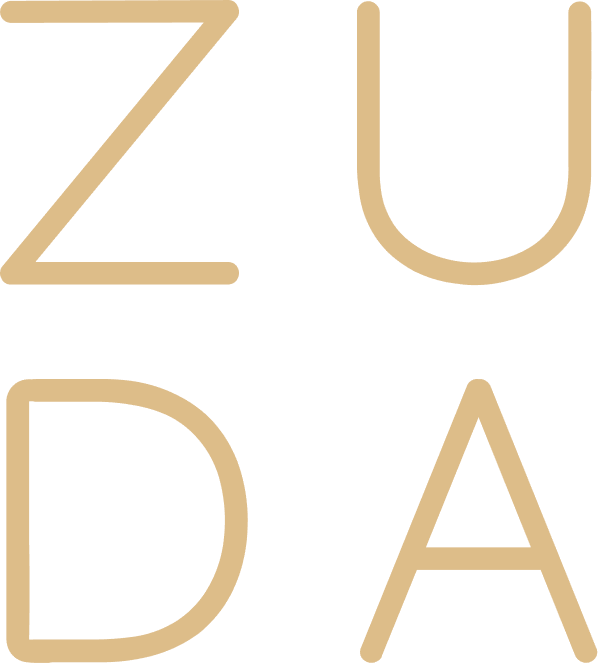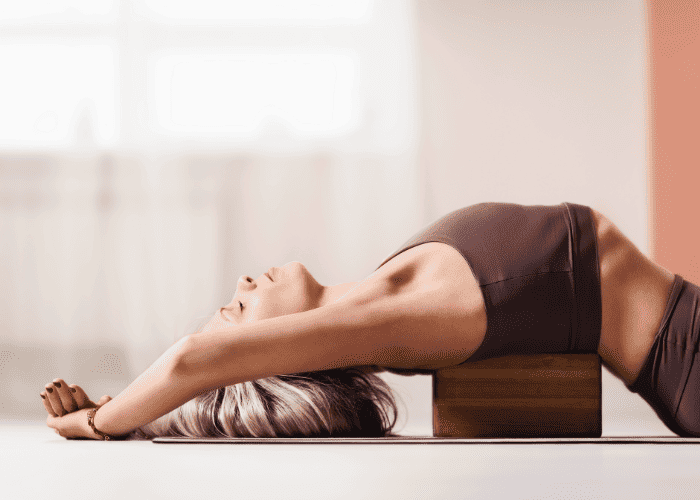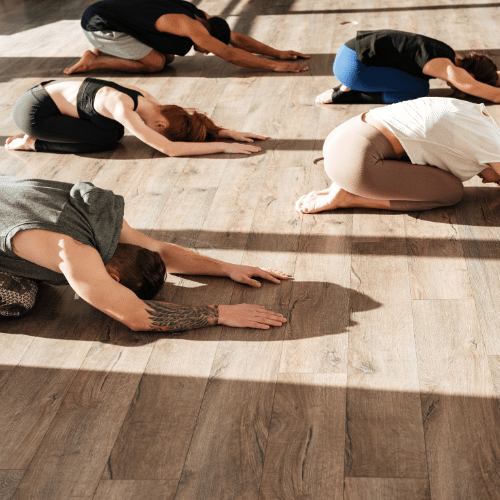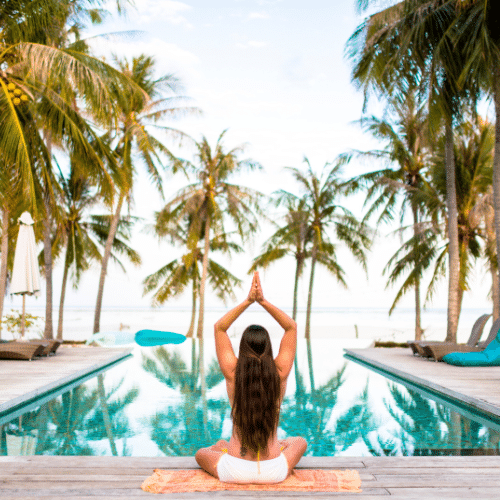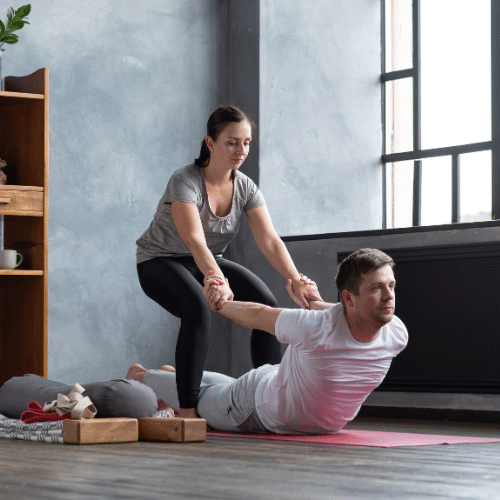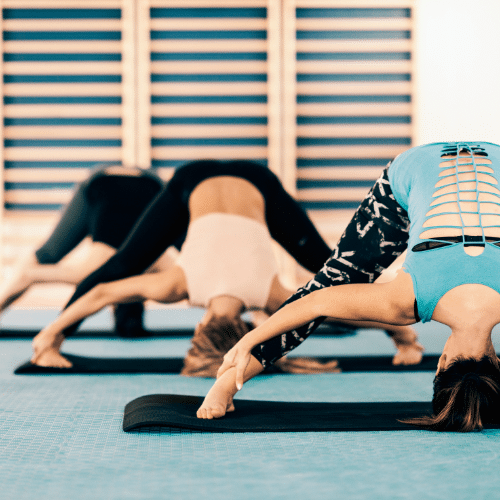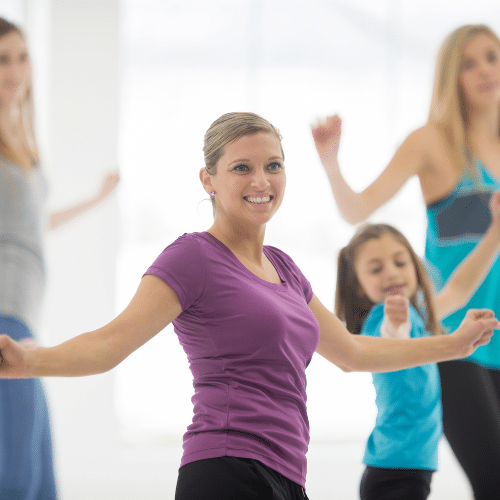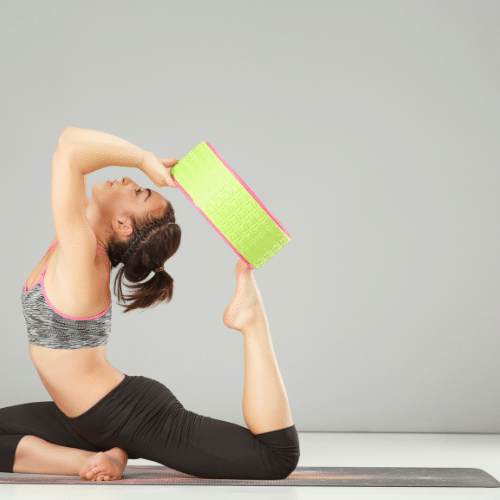Are you struggling to achieve proper alignment and balance in your yoga practice? Do you find it difficult to deepen your stretches or hold challenging poses for longer durations? If so, then yoga blocks might be the solution you’re looking for. These versatile props can enhance your practice by providing stability, support, and increased flexibility.
Whether you’re a beginner or an experienced yogi, incorporating yoga blocks into your routine can help you take your practice to the next level. Using these blocks, you can modify poses to accommodate your body’s unique needs and limitations, making yoga more accessible and enjoyable. In this article, we’ll explore the benefits of using yoga blocks, the different types of blocks available, and how to choose the right ones for your practice.
So, if you’re ready to elevate your yoga practice and experience the transformative benefits of yoga blocks, let’s dive in and discover how these simple yet powerful props can revolutionize your journey on the mat.
Benefits Of Using Yoga Blocks In Your Practice
Using yoga blocks in your practice has a multitude of benefits. One of the most obvious is that they can help you achieve proper alignment more efficiently and with less strain on your body. You can place yourself into poses more comfortably and accurately by using the blocks to support your hands, feet, or other body parts.
Another benefit is that yoga blocks can help you increase your flexibility and range of motion by providing support for deeper stretches. For example, if you struggle to reach your toes in a forward fold, you can place a block under your hands to reduce the strain on your hamstrings and back. You can also use blocks for low-impact modifications of more challenging poses.
Finally, yoga blocks can help boost your confidence in practice. Especially if you’re a beginner, having the support of a block can help you feel more secure and stable in poses. This sense of security will give you the courage to explore poses that may have seemed inaccessible.
What Are Yoga Blocks For?
Yoga blocks are excellent tools to use in your practice. They can be used for various things within your practice as they are a versatile tool. Let’s look at three of the ways blocks can assist you the most:
Lengthen
Yoga blocks can be an excellent tool for helping to increase the length of your body during practice. By placing them under your hands or feet, you can lift your body off the floor and create more space in poses like Downward Dog, Triangle Pose, or Warrior III. This extra support will help you find balance while deepening stretches and providing more stability. Blocks can also help you reach further in poses like Forward Fold or Half Moon Pose.
Align
Yoga blocks can help you get into proper pose alignment when used correctly. By placing them under your hands, feet, or other body parts, you can find a neutral posture that works for you. This will help you move through the pose with greater ease and accuracy. Blocks can also help correct misalignment, allowing you to practice poses more precisely.
Support
Finally, blocks can be used as a supportive tool in your practice. Placing blocks under your hands or feet will provide extra security when attempting poses like a Handstand or Headstand. They can also support the spine and facilitate proper alignment in restorative poses. Blocks can even help you transition between challenging postures more smoothly.
Overall, yoga blocks are an excellent tool for helping you deepen your practice and move through poses with greater ease and accuracy. Whether you’re a beginner or an experienced yogi, you can benefit from adding blocks to your routine.
How to Use Yoga Blocks
Using yoga blocks correctly and appropriately in your practice can take time, but it’s well worth the effort. Here are a few tips for utilizing yoga blocks effectively:
1. Place the block where you need it: Placing it at the appropriate height and distance from your body will ensure you get the most out of your practice. For example, place the block under your hands if you’re doing a standing pose.
2. Adjust the height: Depending on your needs and level of flexibility, you can adjust the block height to suit your body. This will help you get more out of poses and deepen stretches without straining your muscles or joints.
3. Use it for support: Blocks can provide support for balance poses that may be difficult for you. For example, if you’re struggling with Tree Pose or Half Moon Pose, use a block to provide additional stability and confidence.
Types Of Yoga Blocks
There are several types of yoga blocks available on the market today. The most common are foam and cork blocks, but there are also wooden blocks, recycled plastic blocks, and eco-friendly bamboo blocks.
Foam blocks are lightweight and affordable, making them popular for beginners. They also come in various shapes and sizes to accommodate different body types and practices. Foam blocks offer plenty of support but may not be as durable as other types.
Cork blocks are heavier than foam blocks and provide more stability, making them ideal for more advanced yogis. They are also more expensive but can last long with proper care.
Wooden blocks are the most durable type and can withstand frequent use. They are also heavier than foam and cork, providing a more secure base for poses that require balance. However, wooden blocks can be expensive and offer less cushioning or comfort than other materials.
How To Choose The Right Blocks For Your Practice
When selecting yoga blocks for your practice, it’s essential to consider a few factors. First and foremost, consider the type of yoga you’re practicing. If you do a lot of balance poses or inversions, wooden blocks may be your best bet. If you need something lightweight and affordable, foam blocks are probably the way to go.
You’ll also want to consider size and shape. Generally, taller yogis should look for bigger blocks, while shorter yogis may be able to get away with smaller ones. Rectangular blocks are the most common, but round and triangular shapes are also available.
Finally, take into account your personal preferences. If you like the feel of cork blocks but don’t have the budget for them, consider choosing a foam block with a cork-like texture. Ultimately, the right blocks for your practice will depend on your needs and preferences.
In conclusion, yoga blocks are a versatile and essential tool for yogis of all levels. Whether you’re a beginner seeking support in your practice or an experienced yogi seeking to deepen your stretches, these blocks can revolutionize your practice. So grab a block, find your balance, and unlock the full potential of your yoga journey. Namaste!
